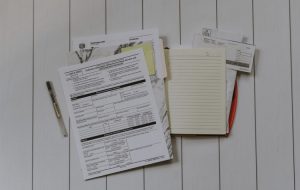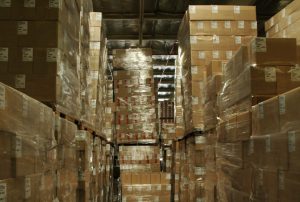To complement our series of QuickReads covering measurement, we will now explore Failure Demand (FD).…

ChangeWise QuickRead : The Seven Service Wastes
In a previous QuickRead, we explored the Seven Wastes as defined by Toyota. In this article, we take a look at the ‘Seven Service Wastes’. This is an interpretation of the Seven wastes by Bicheno and Holweg, 2009, adapted for the service industry. We will look at each waste in turn, along with how to identify them in order to greatly improve your business efficiency and bottom line.
What are the Seven Service Wastes?
These wastes can be found in any industry, but are of particular importance to the service sector – they have a strong impact on customer satisfaction and can directly cause your customer to divert to a competitor. It is important for each organisation to translate how each service waste affects their own customer-base using Voice of the Customer techniques covered previously.
Let’s take a closer look at each one………
Waste 1: Delays

This waste can be found in various forms and mediums, and is relevant where any delay in providing information, services or a product to a customer or end user occurs.
Examples include: waiting for information in the post, being put on hold, waiting for authorisation and queueing.
It is important to reduce or remove this type of service waste as it can cause the customer a great deal of dissatisfaction, and significantly impact your competitive advantage and satisfaction scores.
Waste 2: Duplication

Service organisations are notorious for unnecessary repetition. Especially when it comes to entering the same data over and over. It is also common in quality control processes. While it is vital the end product meets quality standards, it is far more efficient to introduce a process that prevents the error from taking place initially.
For example, if there is a requirement for a quality control team to check forms due to high levels of missing information, a system that does not allow a user to proceed without entering all the information required into each field, would ultimately remove the need for quality control.
All this duplication adds additional cost, and non-value add time that could be spent on more value-add activities.
Waste 3: Unnecessary Movement

This refers to both the physical movement of people and the flow of information required to deliver a product or service. Customers prefer a single point of contact, and will become frustrated if they are passed to different teams in order to achieve what they need. This is especially true if customers are required to queue and wait – this severely impacts customer experience. How often do we ring a contact centre, spend time explaining our problem, only to be passed to another employee where we will have to explain everything again?!
Unnecesary movement can also be found internally, where employees regularly move between buildings to process a customer requirement.
For example, an employee may need to move between floors or buildings in order to obtain signatures.
Removing this waste is a quick and simple way to increase customer satisfaction and reduce employee processing time.
Waste 4: Poor Communication

Communication must be clear, concise and available – or it will cause a whole host of issues and non-value resulting in additional costs.
Complicated jargon or confusion will frustrate your customers and employees, and likely result in unnecessary errors and rework called ‘Failure Demand’ – we will cover this subject in a future Quick Read.
For example, consider selling insurance on-line; customers are unlikely to select a product that they find confusing.
In addition, employees at a call centre might waste vast amounts of time (whilst the customer is put on hold!), checking information with their supervisors if communication standards are poor.
Waste 5: Incorrect Inventory

It is vital to match supply with demand. Out of stock or expired products are frustrating for the customer, they create delays and sometimes force the customer to purchase a product they don’t really want or need – this is bad news for building customer loyalty.
In contrast, too much stock is expensive. It can deteriorate, expire and incur unnecessary storage costs.
An example might be a warehouse supplying bathroom suites. If the supplier providing matching taps is consistently late, you could end up storing large stock items for longer than necessary. This impacts customer experience, is costly to your organisation, and creates a fluctuating pattern of demand on your workforce, as it will be all hands on deck once the missing parts arrive!
As your main source of revenue, it is important you have an effective system for inventory management, and that you understand where and when it is not effective in your organisation.
Waste 6: Customer Satisfaction

In order to achieve a professional relationship with your customer, you must ensure they receive the correct products and services ordered – first time – and on time.
For example, missing or incorrect products in an online grocery shop.
This type of failure demand should be avoided at all costs, as without trust, your customer is unlikely to form a long-term relationship with your business.
Waste 7: Lost Opportunities:

Every single interaction we have with our customers is an opportunity to maintain relationships and nurture loyalty. They are opportunities to both impress and un-impress!
Consider a customer making an order over the phone for pet food, the company may recognise that the customer has been with them for a long time, and offer to put some free samples in with their delivery as a thank you for their loyalty.
However, these interactions do not need to add additional costs, simply ensuring you establish a good rapport through consistently remaining friendly and helpful – and never rude, has a huge and positive impact. Going above and beyond expectation encourages customers to come back time and time again.
Remember that consumers are not motivated by cost alone, and are often willing to pay for an easy interaction, especially one that makes them feel valued.
How can I identify the Seven Wastes?
Creating a Value Stream Map (VSM), followed by a Customer Journey Map, is a great way to identify the seven service wastes – and eliminate them! See our QuickReads on Value Stream Mapping and Customer Journey Mapping for more information.
In Summary
The Seven Service Wastes are a redefinition of the Seven Wastes defined by the Toyota Production System. They are specific to the service industry and focus on removing non-value add processes in order to increase and maintain customer satisfaction, reduce cost within your business process, and ultimately improve your bottom line.
Is there a particular Service Waste in this article that impacts your organisation? Or perhaps you would like to learn more about how the Seven Service Wastes could improve your bottom line? Contact us at info@changewise.co.uk
ChangeWise believes employee engagement is the foundation for successful Change. Training and coaching your people to use simple continuous improvement techniques will enable your organisation to continuously adapt and stay ahead in a constantly changing and challenging environment.
For updates and interesting Lean Change insights, connect with us on LinkedIn.
Find out more about our Public Training Courses



